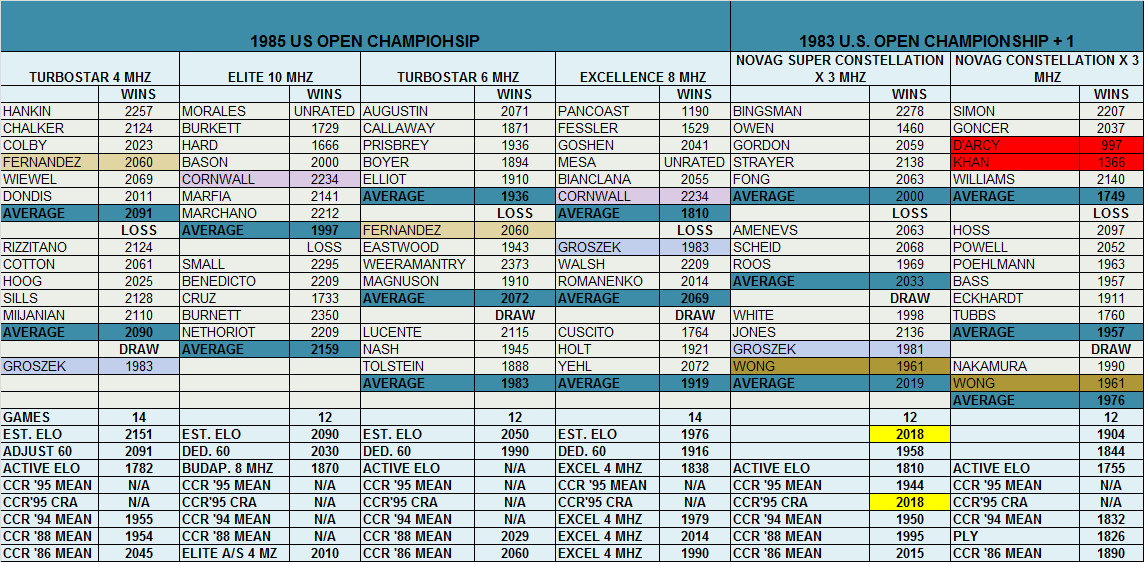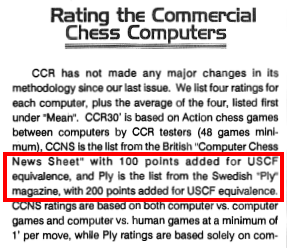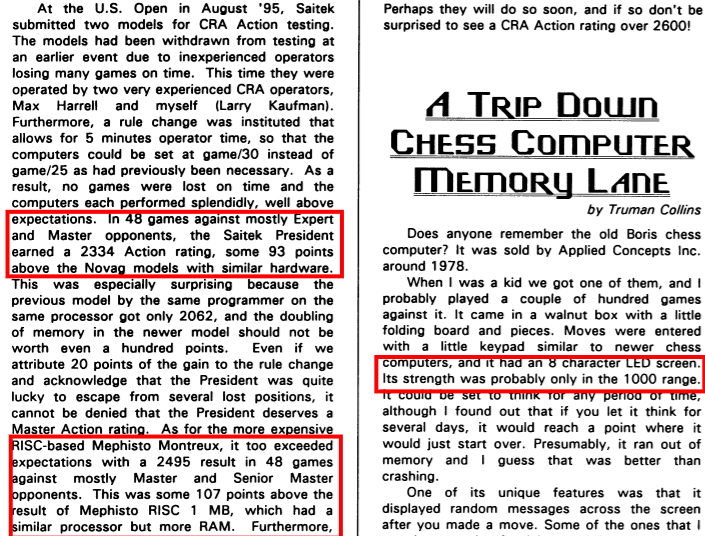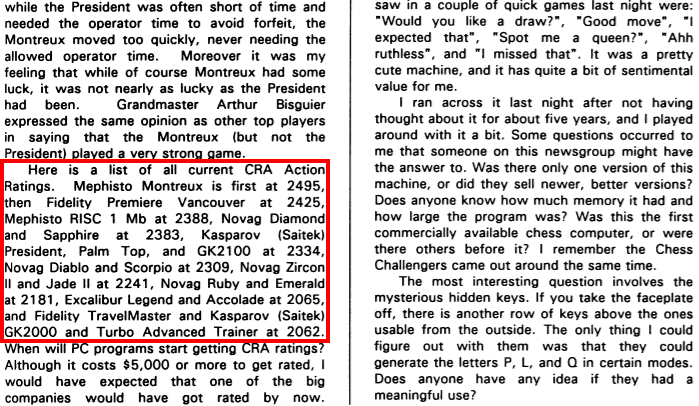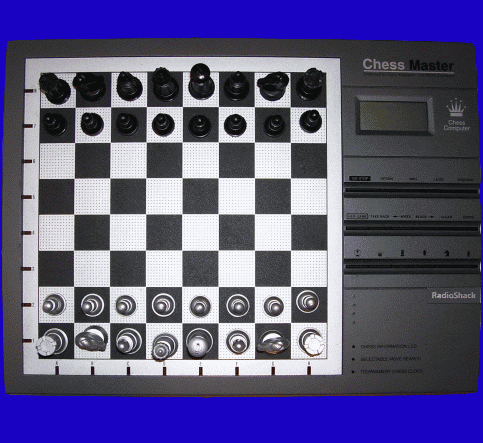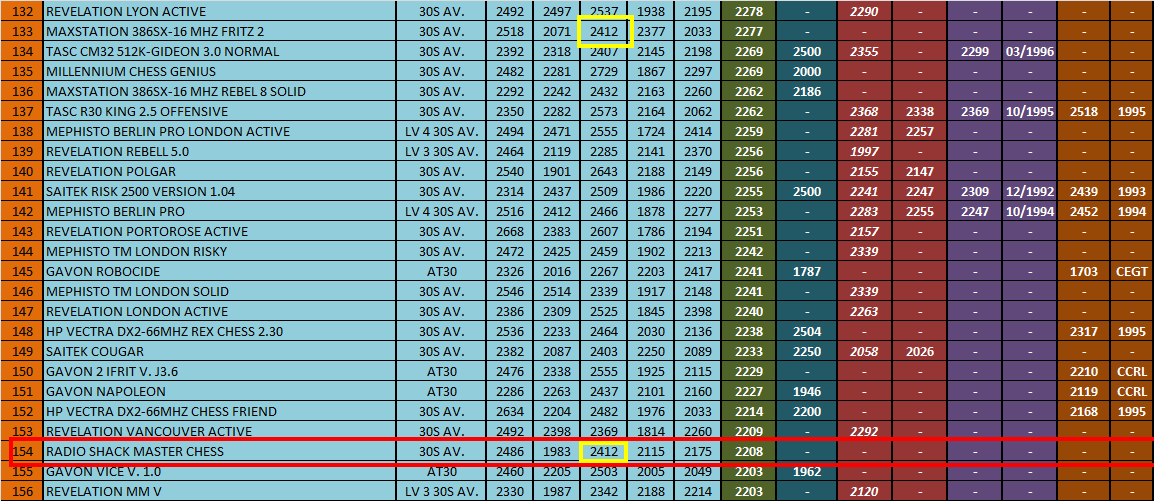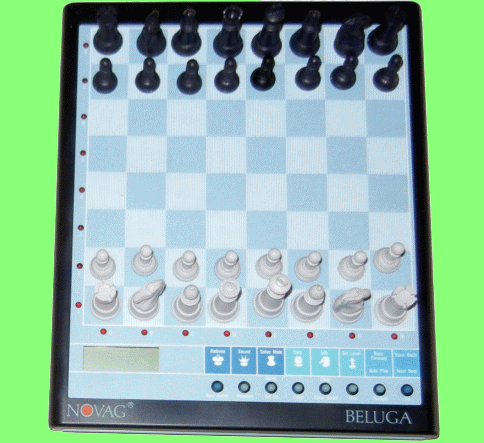Recently I have posted about differences in ELO's with USCF ratings and FIDE or Eurpoean ratings.
I have done some further reading and searching around regarding this topic and my belief is that the rating calculators that are being used such as ELOStat work well in what they do.
However, the problem lies in that these calculators are not able to calculate a FIDE List from top to bottom correctly because of the limitations of FIDE's rating as magnified by the Chess.com report that I showed earlier with FIDE's Novice rating starting at 1400 ELO and nothing is acknowledged below that. 90% of the world players lie at around 1400 ELO therefore you know that FIDE is not a good calculator for this area since many people who have played for years still play at around this level.
As reported in an earlier post USCF generally considers Beginners to be playing at 800 ELO. Therefore the rating calculators by virtue of this only have the ability to calculate accurately a USCF rating when it comes to chess computers because the relationship between a beginning computer and a human player has to be around the same. A USCF rating is the only rating that can achieve this through a rating calculator.
Another problem is that all rating lists in the past and present are run by Europeans and other countries outside the U.S. Which means that there exists a hole into which a square peg is being forcibly driven into it. Meaning, by nature the calculators that really only work for USCF are being adjusted by Eurpoean ratings to selectively fit what is perceived to be a good rating for selected computers to match their experience which in turn drives down the list to a level where you can neither compare a European player whose own ratings are Fide or a USCF player because the ratings at the bottom of the rating scale end up being too low for everyone.
Therefore since by nature in how the calculators work, you actually end up having a list based on a USCF formula that is too low for USCF and at the same time has little relevance for a European player either.
I think Kaufmann and CCR new all this as their continuous references and adjustments seem to confirm the same.

Notice how everything is always referenced as European Ratings and not FIDE?
It's because you cannot use these calculators to create a FIDE list.
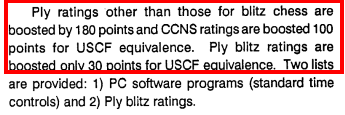
Notice how CCR also has to manually adjust to get a USCF equivalent?
Notice how also they adjusted the SSDF (PLY) Tournament results by 180 points and Blitz by 30 points to give you a CCR rating as follows:
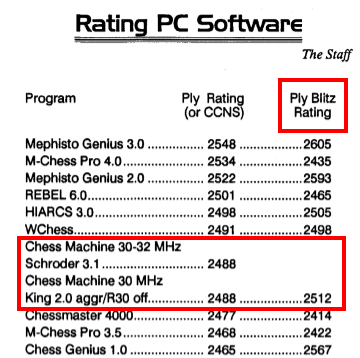
If you look at the above from the 1995 CCR list you will see that R30 King 2.2 was adjusted to have a 2488 Tournament rating and 2512 Blitz rating.
This would mean that PLY had R30 King 2.2 rated on a European list as:
Tournament = 2308 ELO
Blitz = 2488 ELO
Obviously CCR did not buy into this kind of discrepancy and therefore adjusted the rating with only 30 ELO for Blitz instead of their usual 180 for tournament ratings.
Anyway since Brian had sent me some early reports from some good scores he is getting with testing Genius 3, the above chart was pulled up to compare and I noticed that Gideon 3.1 is also showing on this chart. Since Gideon 3.1 is also listed with dedicated computers and showing with DOS computers I thought that Gideon 3.1 might be an ideal reference point for some comparisons, using ELO 2488 as a USCF baseline for Gideon 3.1.
With this in mind I asked Micha at Schachcomputer.Info to run the Active list using Gideon 3.1 as a baseline with 2488 ELO. Micha kindly provided the list and I used this list to do some comparisons and adjustments based on the 60 ELO difference for USCF compared to FIDE reported by Brian B in an earlier post and also the Chess.Com comparison chart for beginners who had both FIDE and USCF ratings. Here is the rating list that I created with all the adjustments:

To the left in green I named the list Kaufmann 95 which created with Gideon 3.1 showing as ELO 2488 as a USCF value. The next column shows the adjustments as an approximate reference to FIDE strength using the Chess.com adjustments and the 60 ELO adjustment on the top end. I then compared it to the current Active List and noticed that the value 111 is constant throughout the list as the difference. The Fide value is also constant with 51 ELO difference until you get closer to the area where the Chess.com adjustments kicked in.
When I saw this I thought wow, the current Schachcomputer Active list would probably only have to be adjusted with a 100 point increase and you would get a really good USCF list from start to finish.
Now I ask you take a close look at the USCF ratings or if you are a FIDE player at the FIDE comparison and compare these computer ratings from top to bottom with:
1) What old experts showed
2) How it matches to an official USCF or Fide scale (especially at the bottom)
3) How certain computers performed against humans in tournaments (ie take the Atlanta report from an earlier post)
4) What your gut tells you as a player without influencing yourself too much because of your familiarity of a specific computer.
I would love to hear from you all and see what your feelings are based on the above rating charts. Does Kaufmann work for you? Does Active List plus 100 work for you? Or does current Active list as it stands work for you?
Best regards


